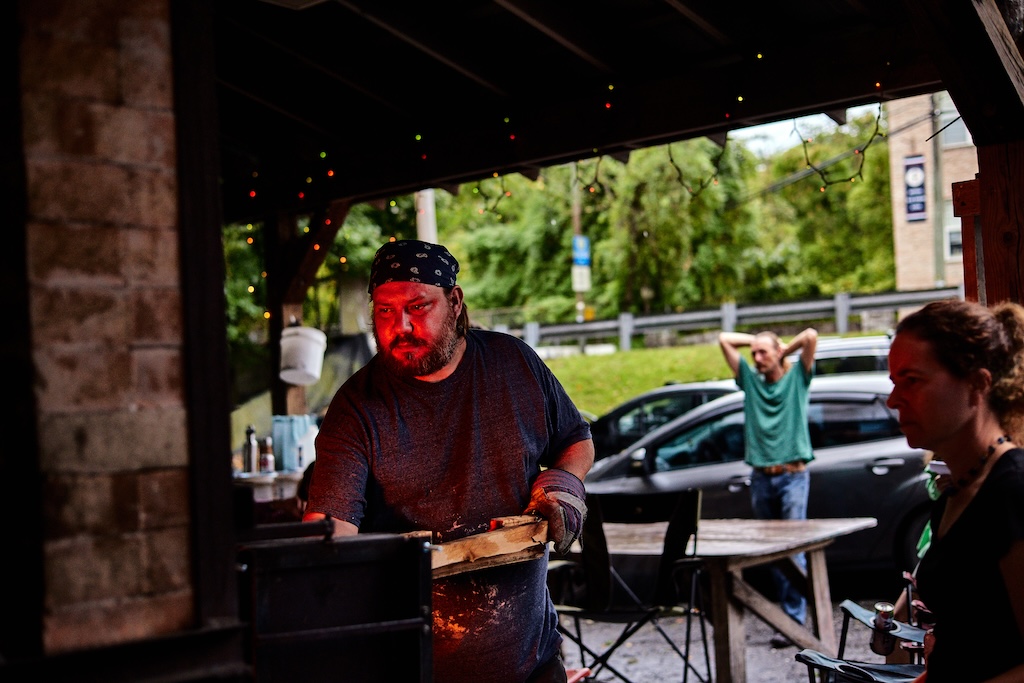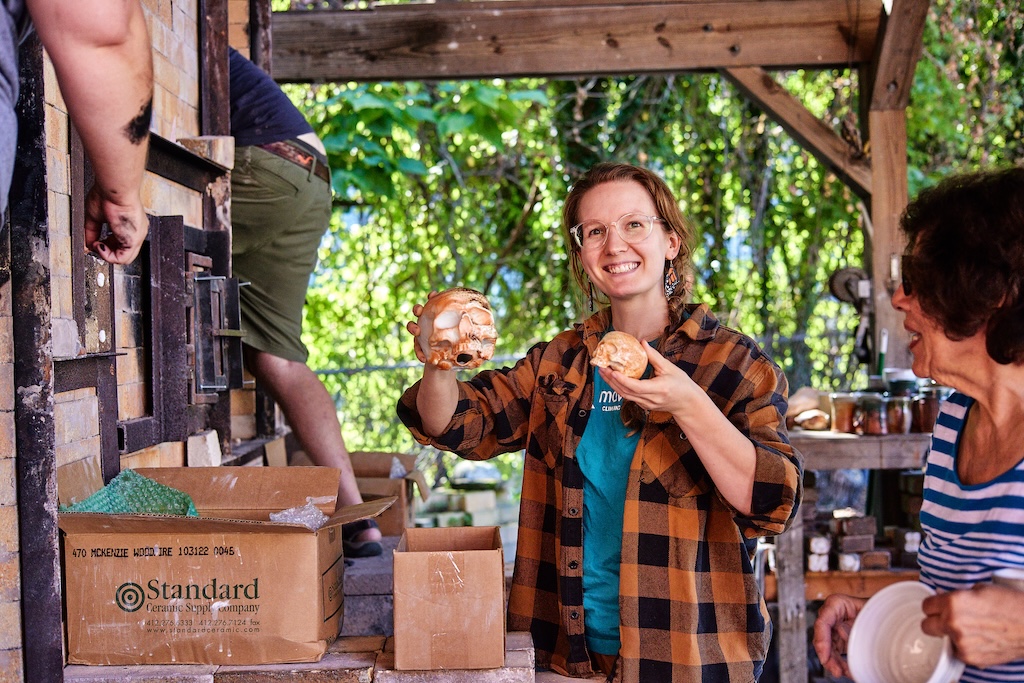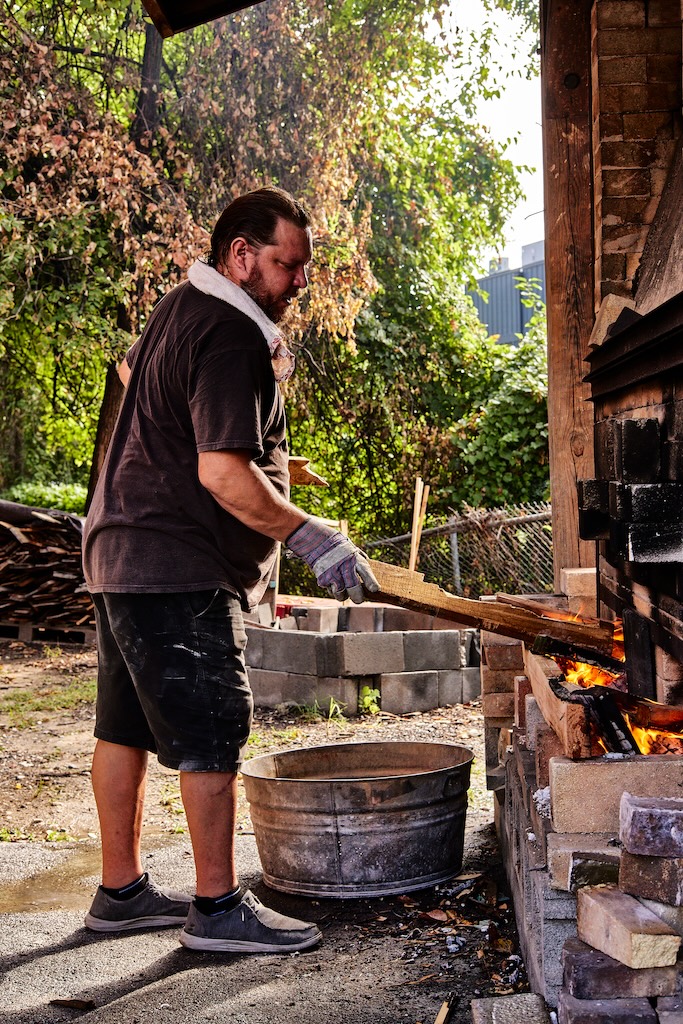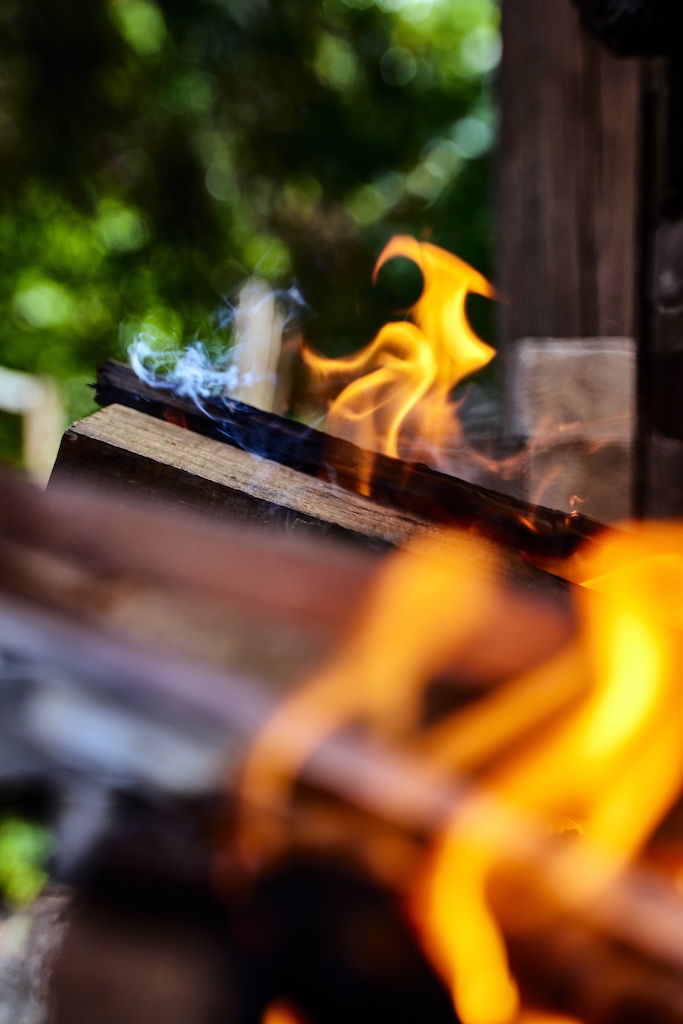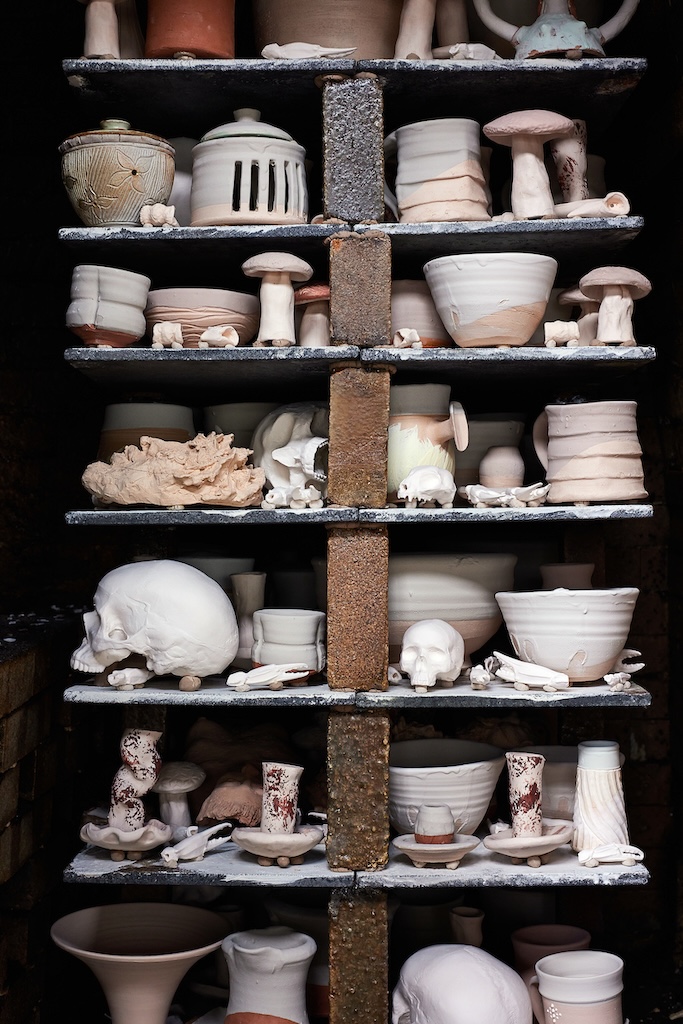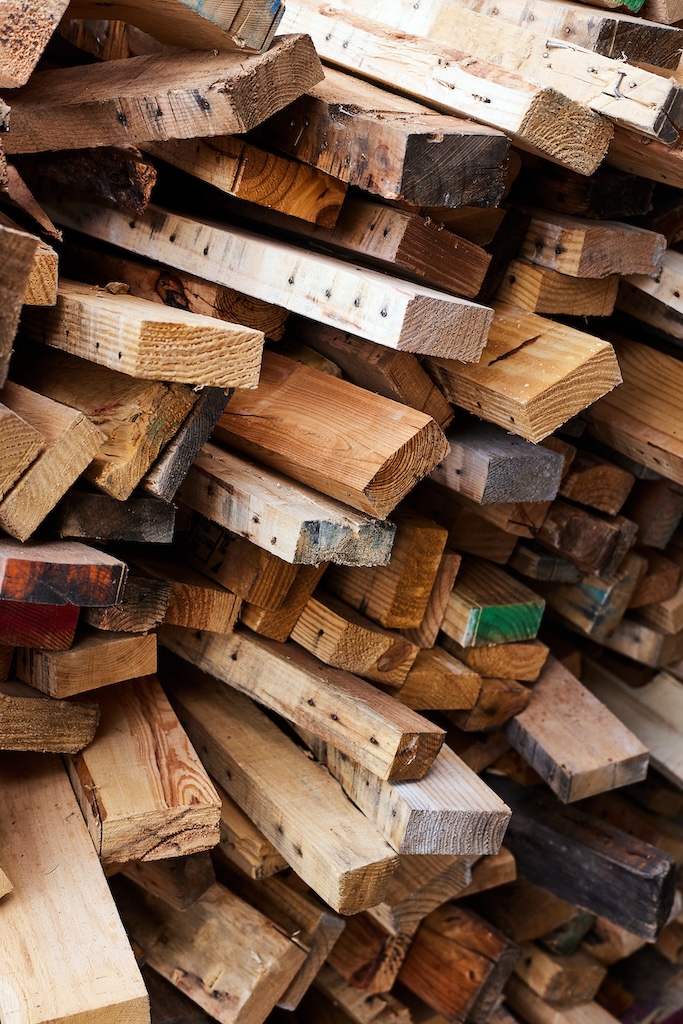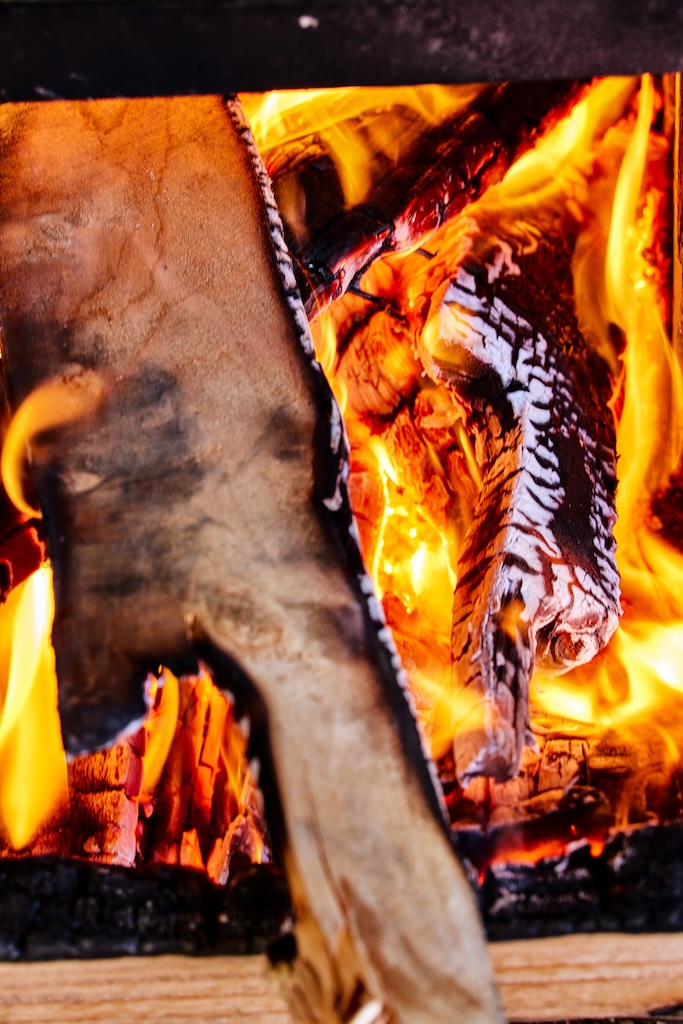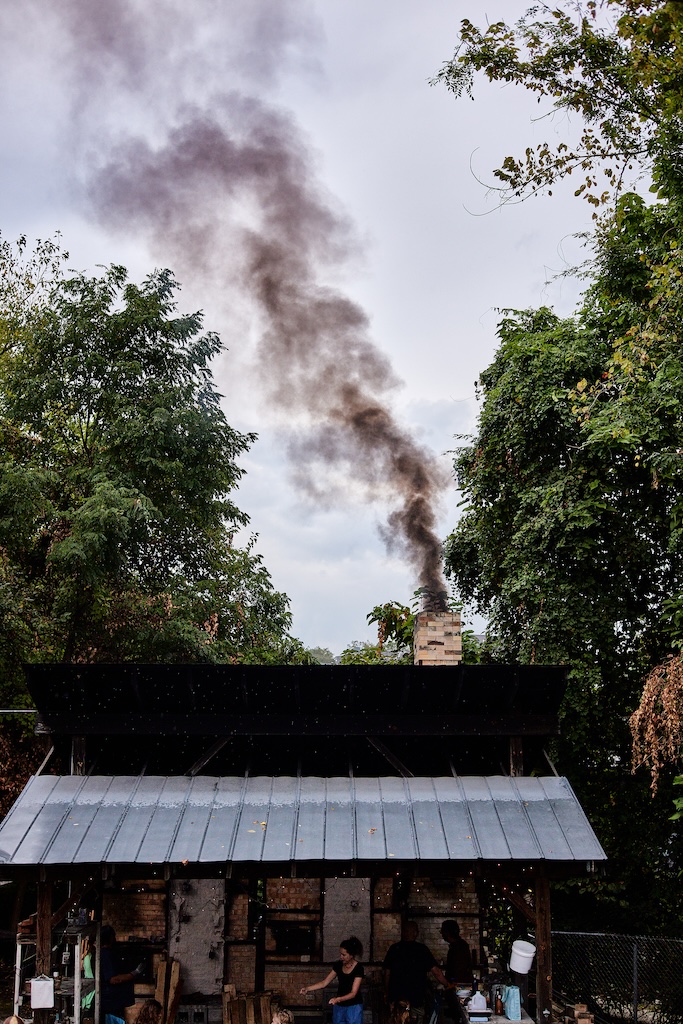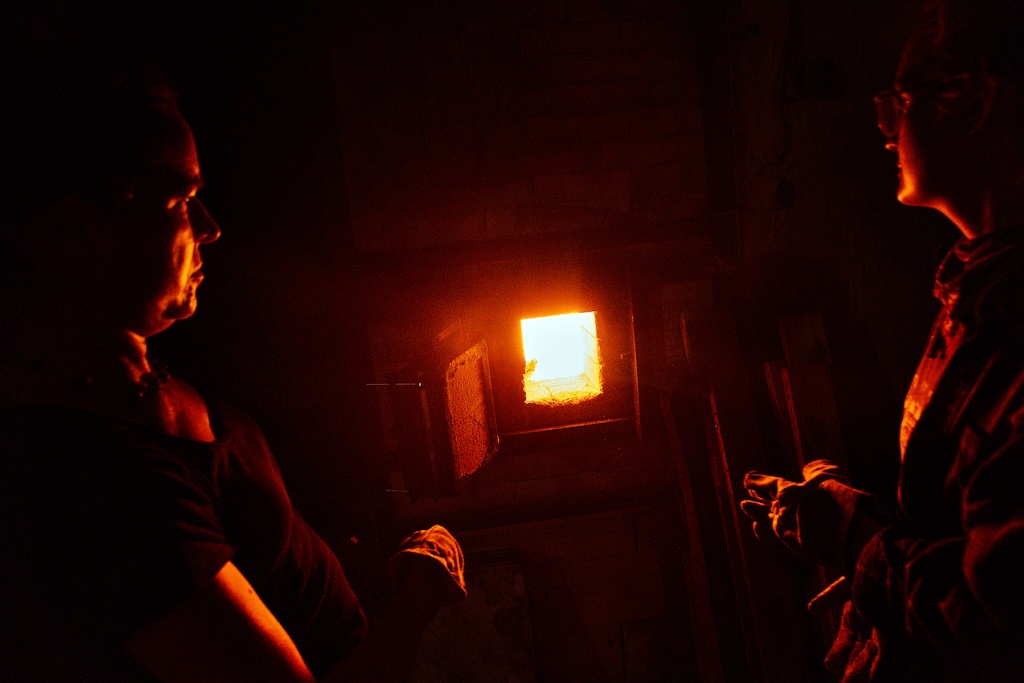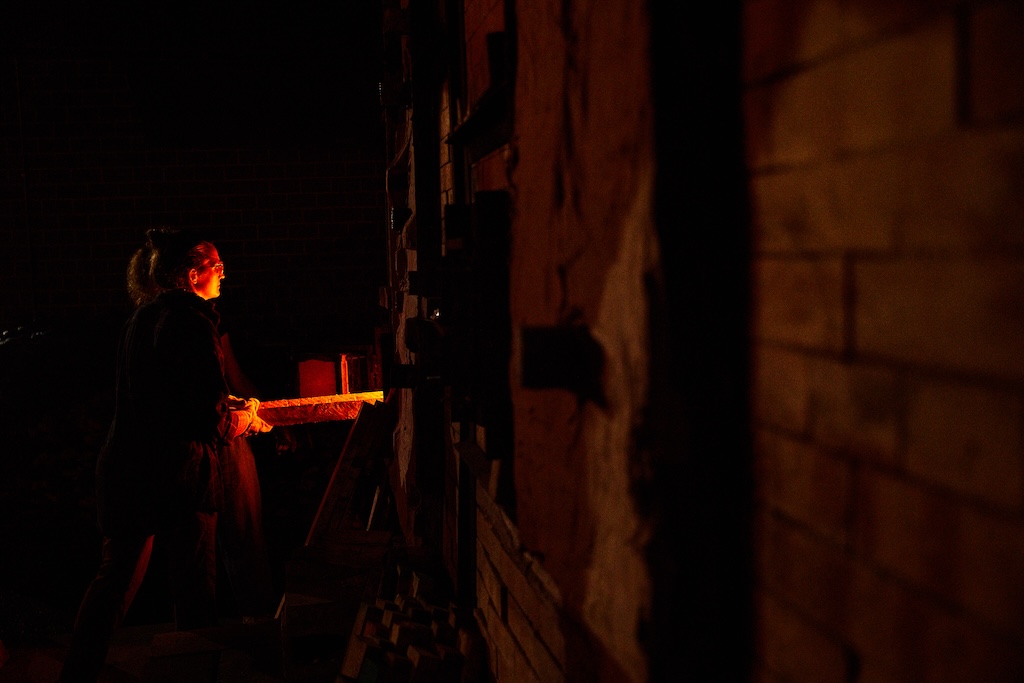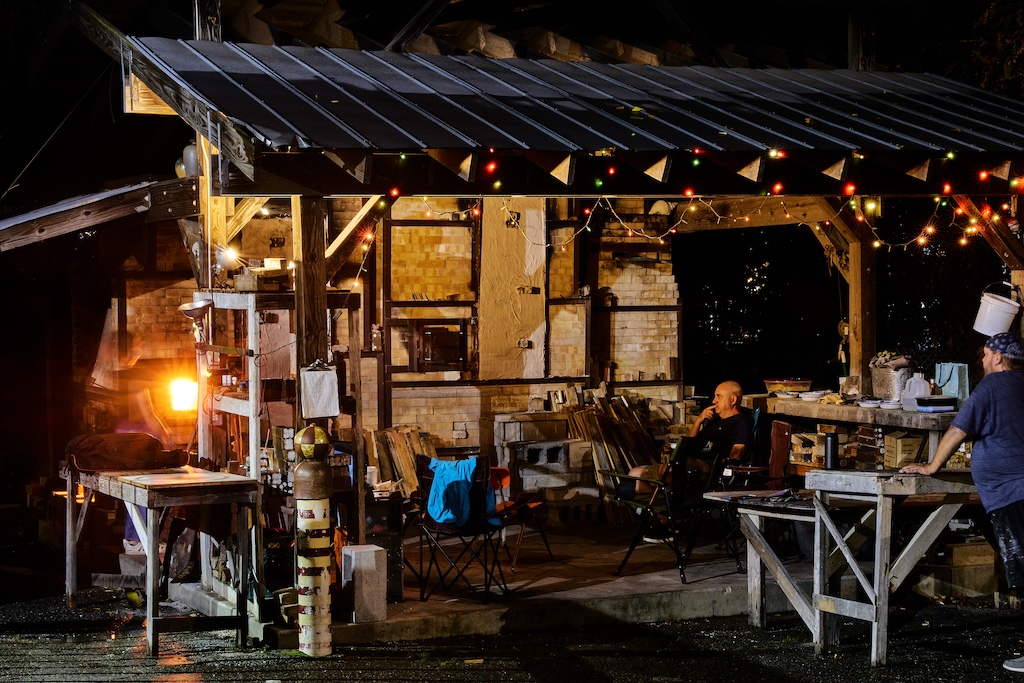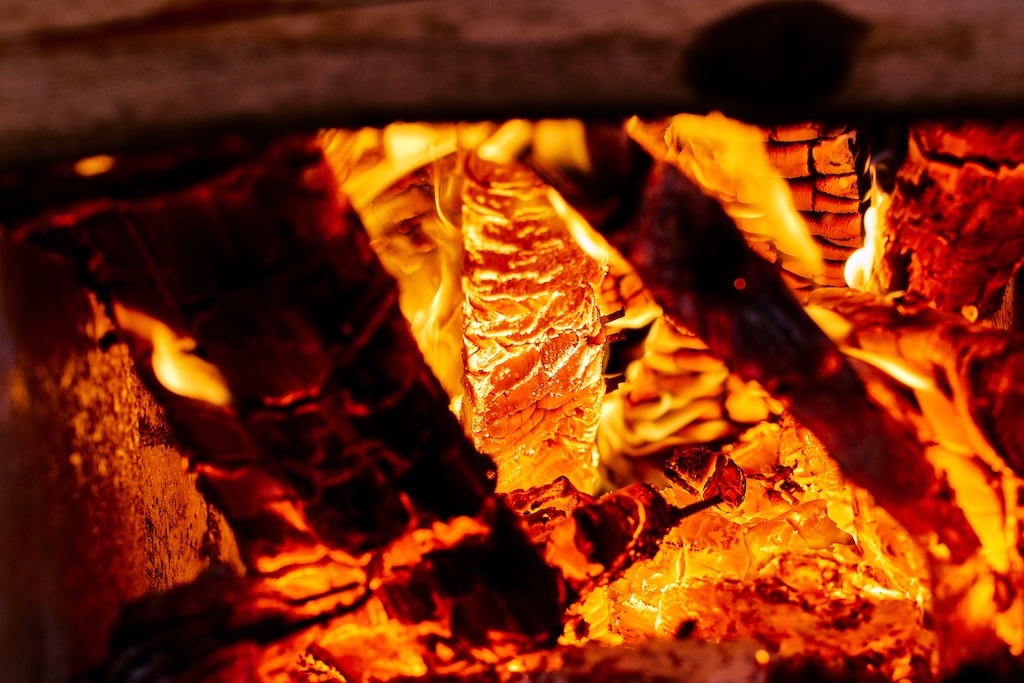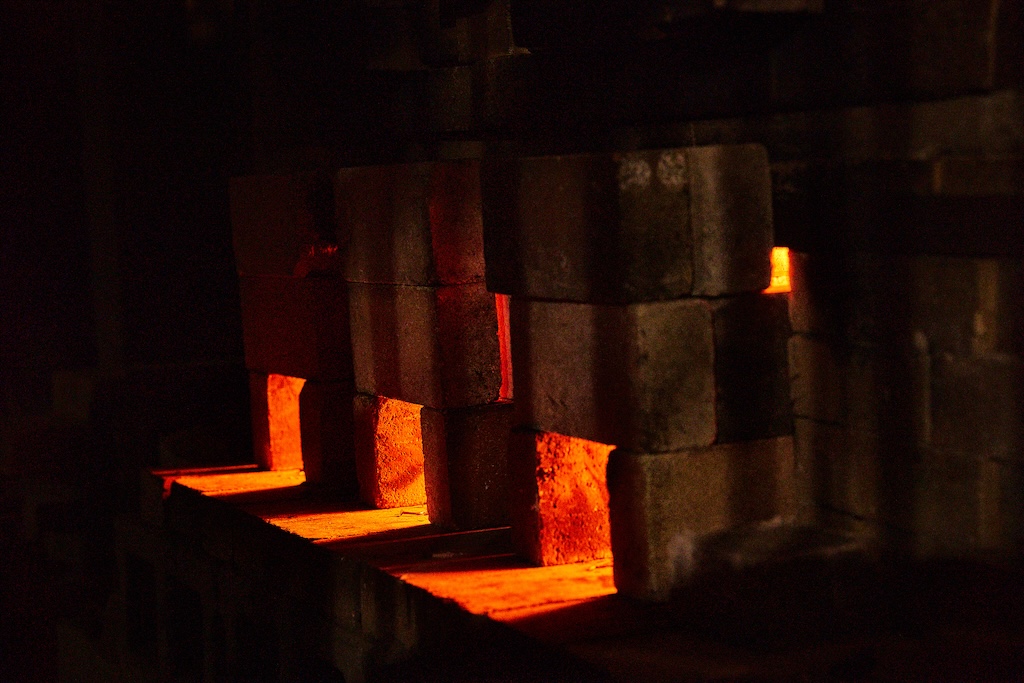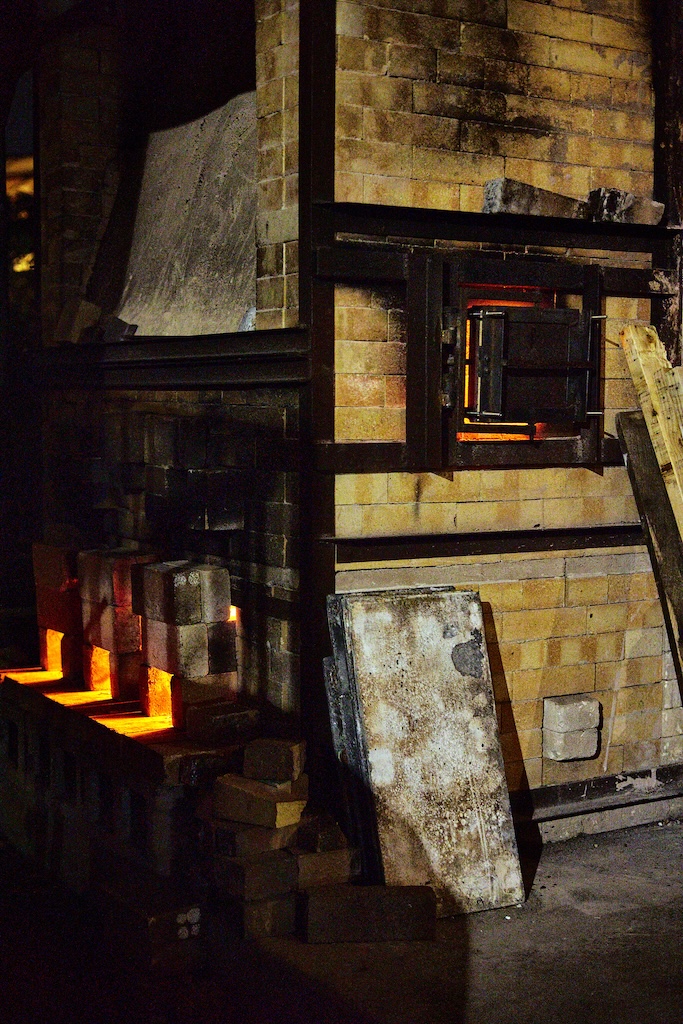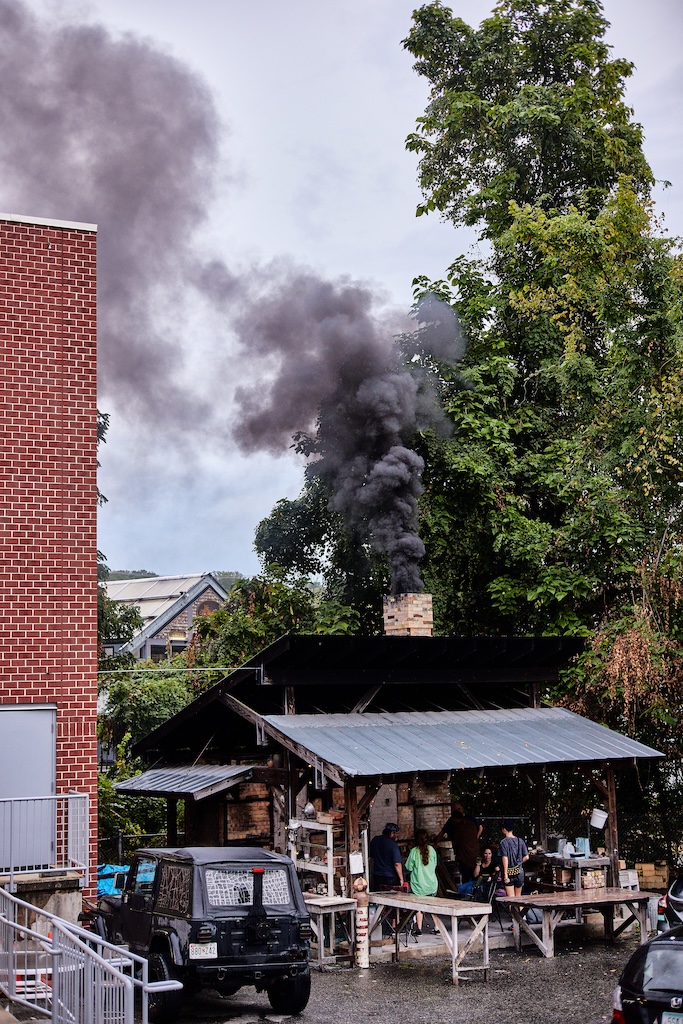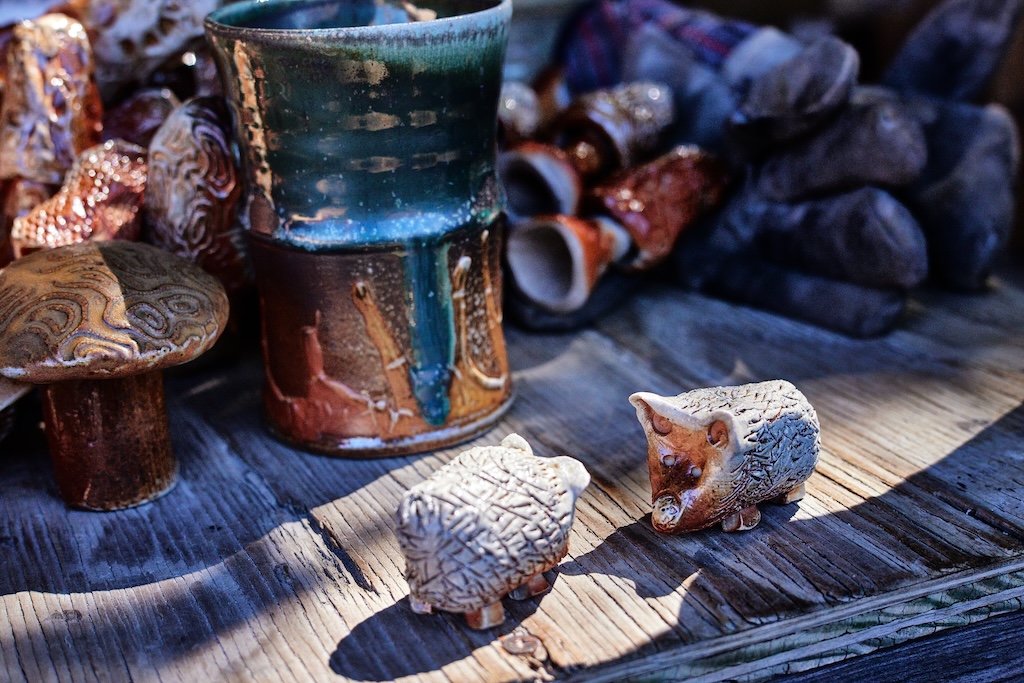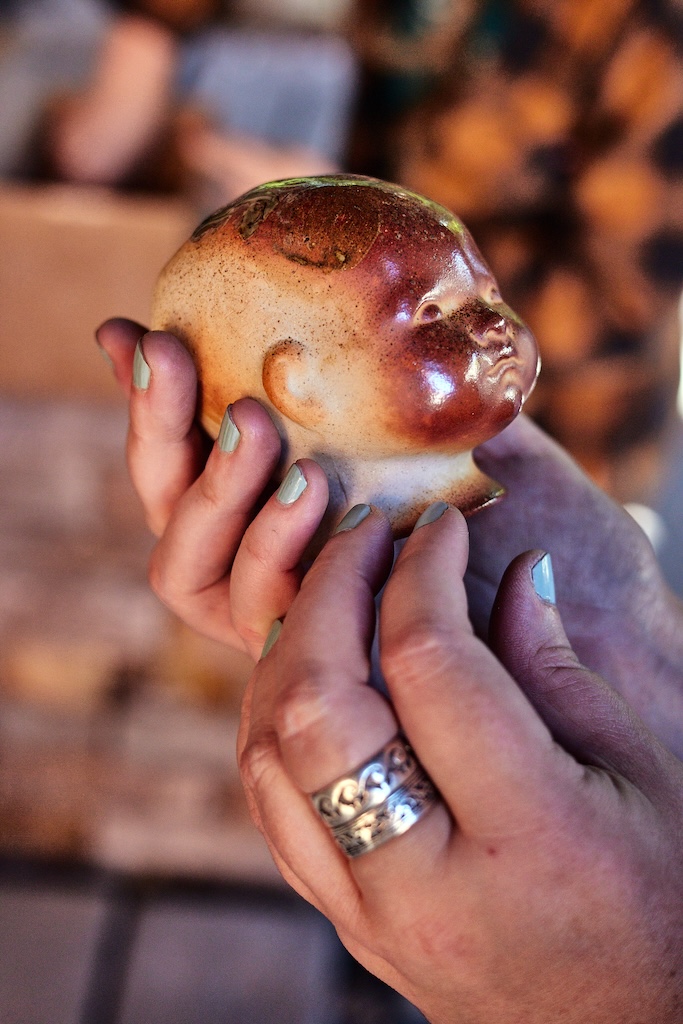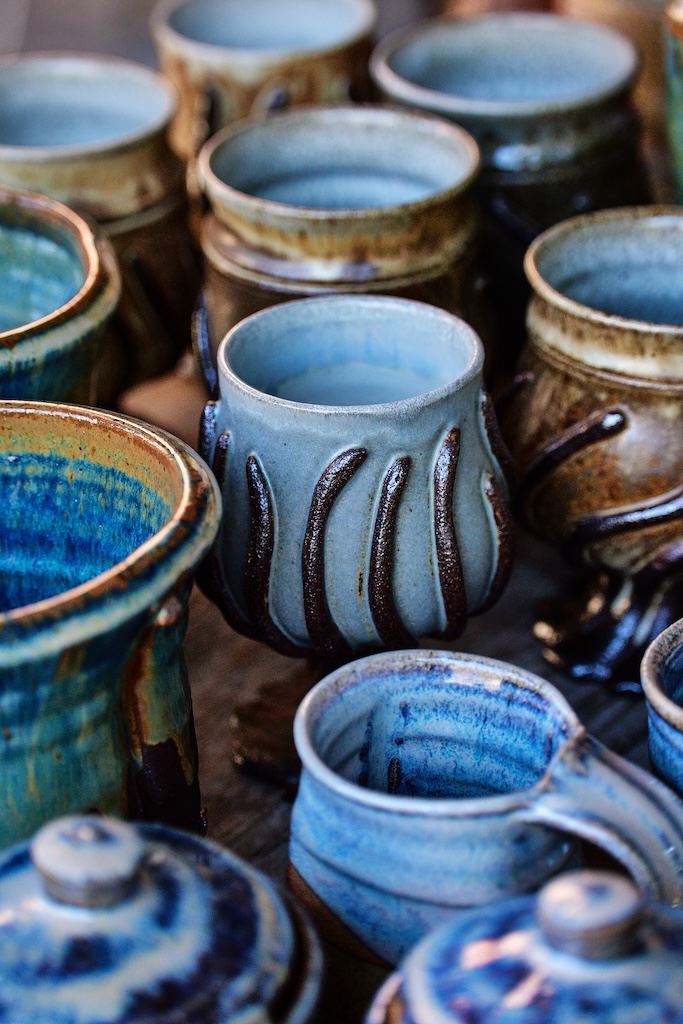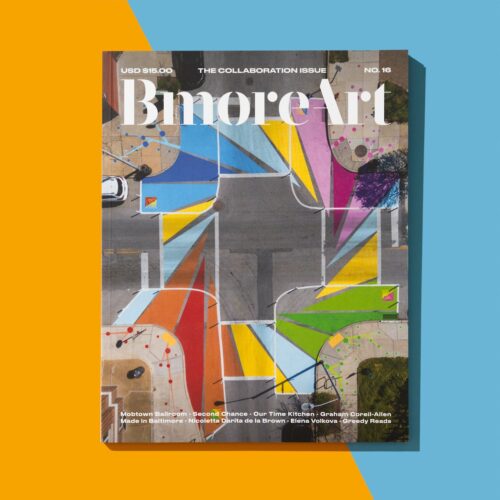I watch Jeremy Wallace, a wood kiln technician, close off the stoking hole with yellow fire bricks, but I can see the red hot glow of flame through small gaps between them. In this “reduction phase,” wood is loaded into the first chamber roughly every five or ten minutes. Ceramicist and technician Matt Gaddie built the two-chamber wood/soda Noborigama, a Japanese term for a climbing kiln. This ascending tunnel of connected chambers has been used in Japan since the 17th century. Wood firing takes an entire day and night with a group of artists on three to six hour shifts, never leaving the kiln unattended.
Nada Abizaid, a ceramic artist, puts on leather gloves and opens a small steel door to add pieces of recycled pallet wood. This process is repeated until the second chamber is fueled with wood and the temperature of 2400°F is reached. In wood firing, the ash inside the chamber becomes an essential element as it allows for surprising and unexpected patterning in the glazing.
Soda ash added to the second chamber affects the sheen, texture, and glaze of pieces which all contribute to the final outcome and variety of the finishes in works by Abizaid and a group of other ceramicists. “I enjoy the community aspect of firings as well as discovering each piece’s uniqueness when unloading the kiln,” says Abizaid. “The imprints of elemental properties inherent to ceramics fired in a wood kiln often yield mesmerizing finishes; it almost adds a fourth dimension to the artworks.”




